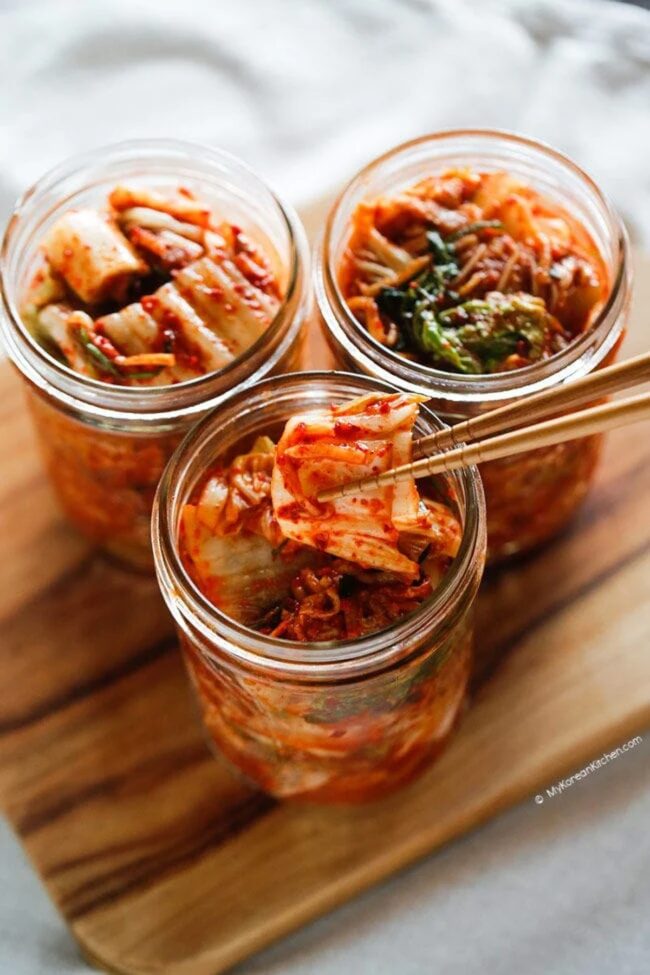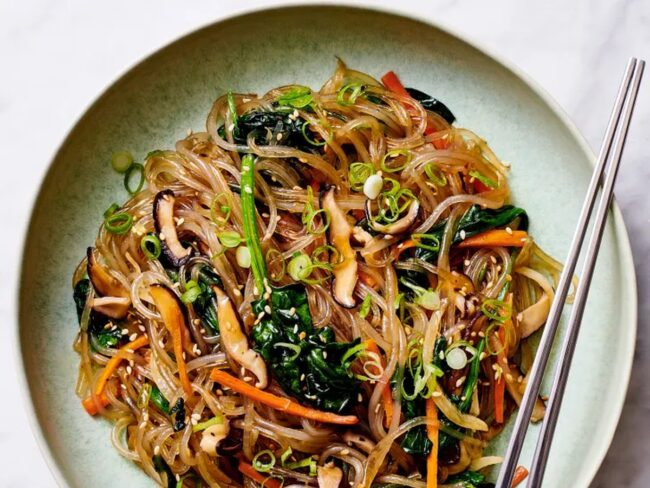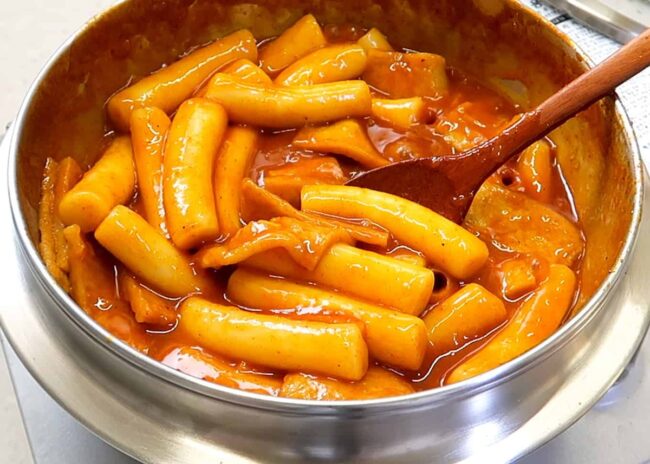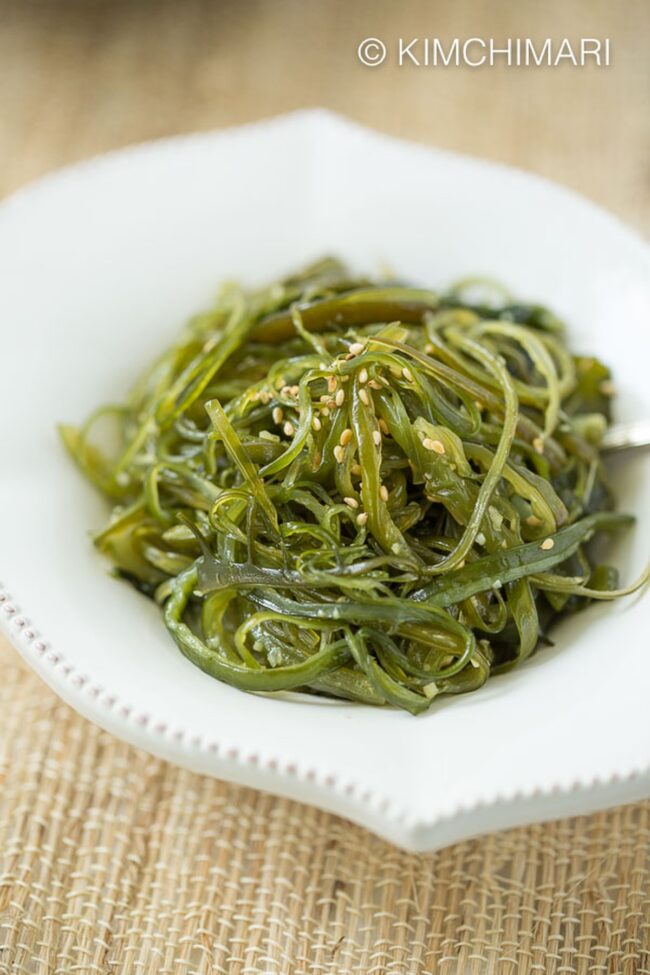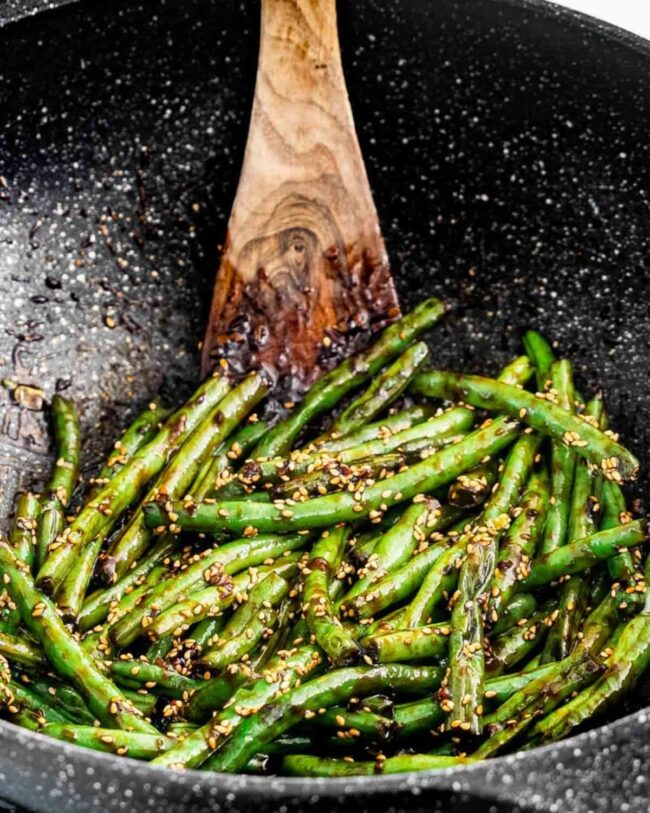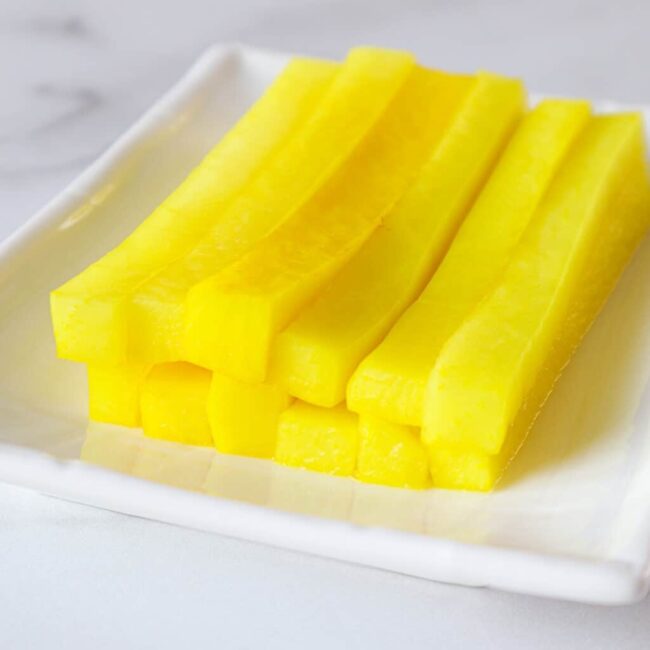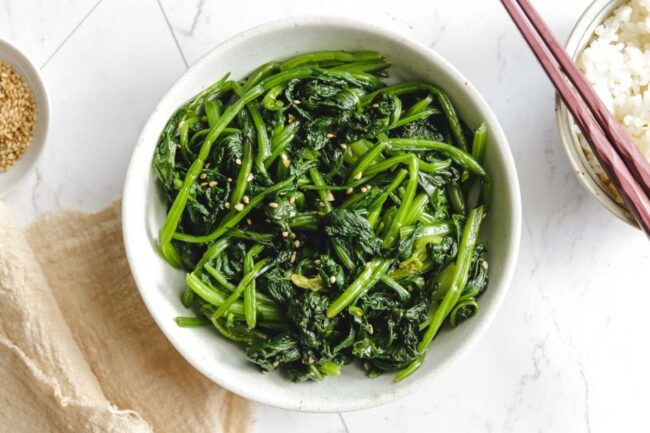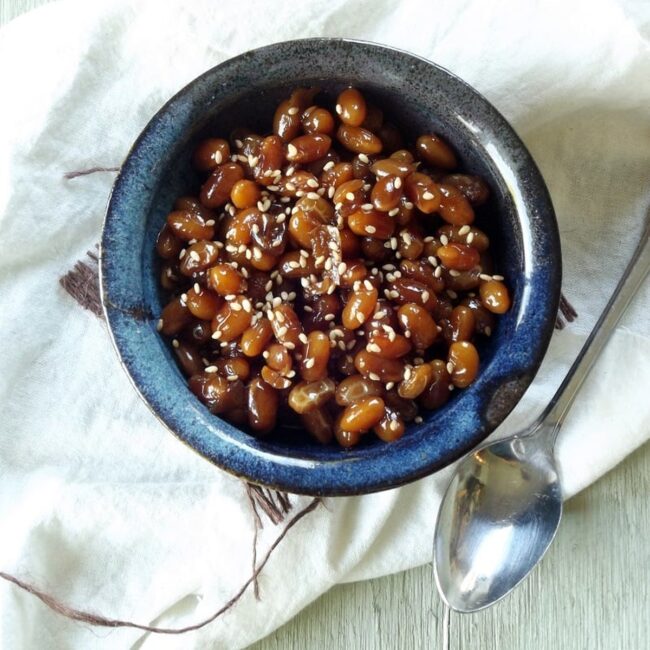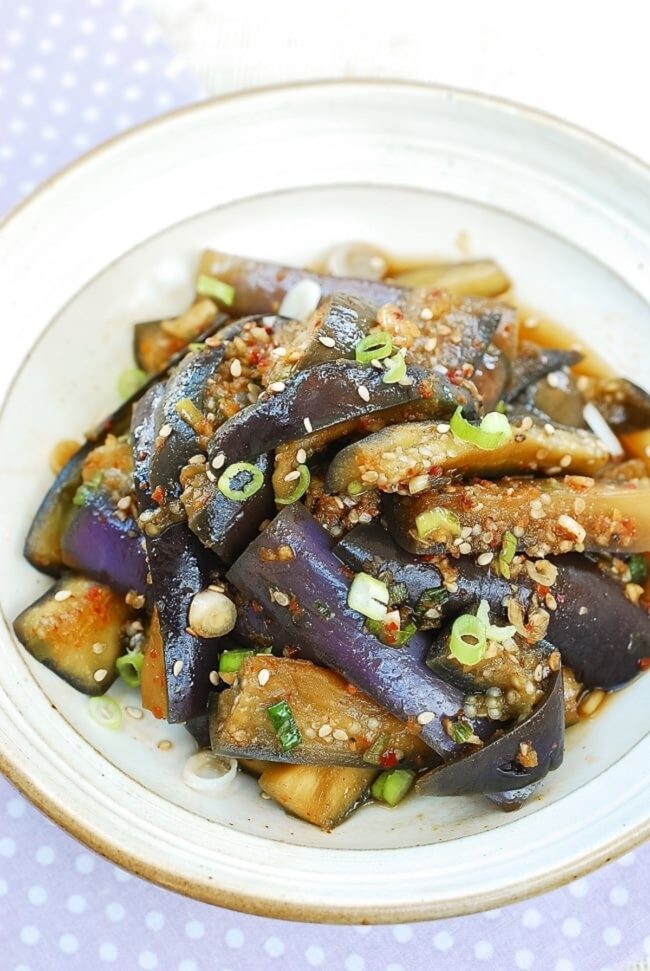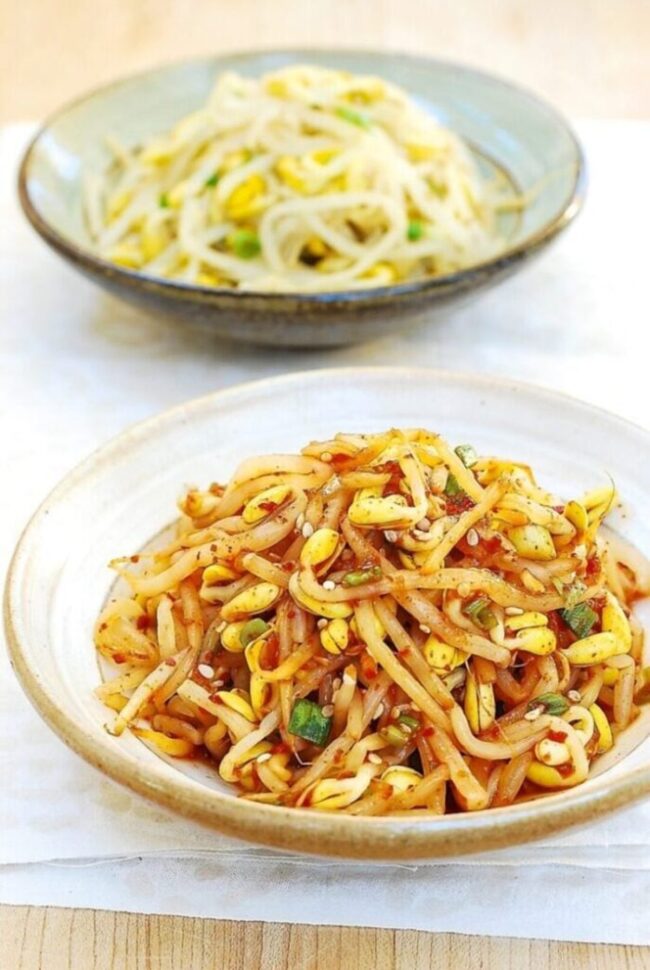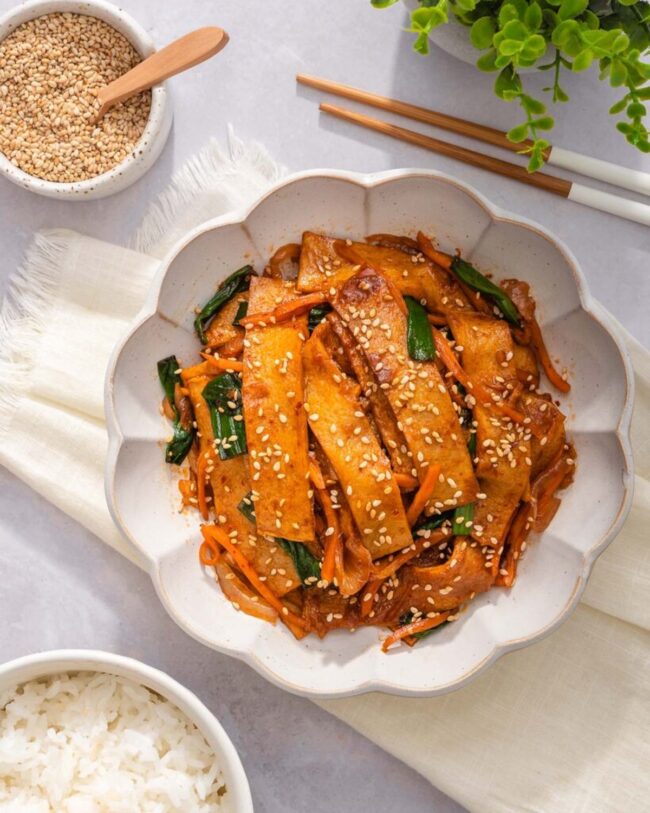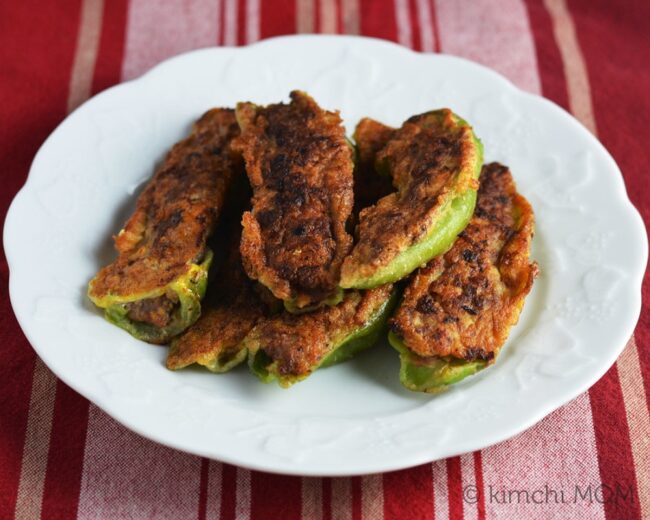15 Classic Korean Side Dishes That Enhance Every Bite
Amazing Korean side dishes showcase bold flavors and dynamic textures in every bite. Some deliver crisp, refreshing notes, while others bring heat and deep umami richness.
Fermented, fresh, and savory elements come together in perfect harmony. Vibrant colors and layered seasonings make them stand out.
No meal feels complete without them on the table. The 15 selections ahead will add a flavorful kick to any dish:
15 Korean Side Dishes to Add to Any Meal
Discover classic Korean banchan that make any meal better. These small dishes pack big flavors.
Kimchi
Kimchi stands out as a quintessential Korean dish renowned for its bold, spicy flavor and complex fermentation process. This iconic side dish features napa cabbage that's generously coated in a zesty mixture of red chili flakes, garlic, ginger, and fish sauce before undergoing fermentation that creates its signature tangy profile.
With an impressive array of vitamins and probiotics packed into each serving, kimchi offers not only taste but also health benefits. You can savor it on its own or incorporate it into various dishes like stews or fried rice to enhance your meals with a distinctive kick.
The tradition of making large quantities at home during “kimjang” turns the preparation into an engaging communal experience cherished among families in Korea.
Japchae
Japchae represents a beloved Korean noodle dish known for its delightful combination of chewy glass noodles and an array of colorful vegetables. This recipe highlights sweet potato starch noodles, which become translucent when cooked, creating an enticing visual appeal.
After preparing the noodles to perfection, you will stir-fry them alongside fresh ingredients like spinach, carrots, mushrooms, and onions that add both texture and nutrition. A delectable sauce crafted from soy sauce, sugar, and sesame oil infuses the dish with rich flavor while toasted sesame seeds provide a satisfying crunch on top.
Enjoy japchae warm or chilled; it harmonizes beautifully with grilled meats or traditional kimchi as well as allowing for endless customization options based on your taste preferences.
Tteokbokki
Tteokbokki showcases the delightful combination of chewy rice cakes enveloped in a spicy, savory sauce that defines Korean street food. Infused with gochujang and gochugaru, this dish delivers an unmistakable heat that keeps you coming back for more.
Enhancing its heartiness, adding fish cakes or boiled eggs enriches each bite while offering nutritious benefits. For a balanced meal experience, pairing it with milder accompaniments like gyeran mari or tangy kimchi creates an enjoyable contrast on your plate.
This popular delicacy invites everyone to savor its unique flavors and textures at any casual gathering.
Korean Pancakes (Pajeon)
Korean pancakes, known as pajeon, feature a deliciously crispy exterior that contrasts beautifully with their chewy interior. Made from a simple mixture of flour, water, and eggs, these savory delights are often packed with green onions and can include seafood or an array of vegetables for added flavor.
To whip up pajeon at home, you simply prepare the batter and pour it over sautéed green onions in a hot pan filled with oil; cooking until golden brown results in irresistible texture. Serving them hot alongside a zesty dipping sauce made from soy sauce mixed with vinegar and red pepper flakes enhances their appeal further.
These pancakes serve wonderfully as snacks or tasty accompaniments to any Korean meal you're enjoying together.
Seaweed Salad
Seaweed salad is a popular Korean dish known for its refreshing taste and unique texture. Utilizing dried seaweed that has been rehydrated, it combines the briny essence of the ocean with crunchy vegetables like cucumber and radish.
The dressing typically consists of garlic, soy sauce, vinegar, and a hint of sweetness to enhance its savory profile. Rich in minerals and nutrients from sea plants, this salad serves as an excellent complement to rice or various other Korean meals.
Enjoying it chilled makes this dish particularly appealing during warmer weather when you seek something light yet satisfying.
Korean-style Green Beans
Korean-style green beans serve as a delightful side dish that adds both flavor and health benefits to your meal. Fresh green beans are paired with aromatic garlic, enhanced by the nutty richness of sesame oil.
Begin by boiling the crisp-tender beans before stir-frying them with minced garlic in a hot pan; this technique brings out their natural flavors beautifully. A splash of soy sauce along with sesame oil infuses each bite, while toasted sesame seeds provide an appealing crunch on top.
These vibrant vegetables complement rice and various Korean main courses effortlessly, making it easy for you to incorporate more greens into your dining experience.
Pickled Radish (Danmuji)
Pickled radish, known as danmuji, offers a burst of tanginess and sweetness that enhances any meal. This Korean delicacy stands out with its eye-catching yellow hue and satisfying crunch.
Slicing daikon radish into thin pieces sets the stage for soaking them in a blend of vinegar, water, sugar, salt, and turmeric, an essential ingredient that imparts both color and flavor. After letting the mixture sit for at least 24 hours to pickle thoroughly, you have an ideal accompaniment ready to elevate your dining experience.
Commonly found alongside various Korean dishes or rolled up in kimbap, this pickled treat adds both zest and texture to every plate you serve it on.
Sesame Spinach Salad (Sigeumchi Namul)
Sesame spinach salad, known as sigeumchi namul, highlights the natural goodness of fresh spinach in a flavorful Korean side dish. With its rich blend of soy sauce, sesame oil, garlic, and toasted sesame seeds, this recipe creates an irresistible nutty taste that complements any meal.
Begin by carefully washing the spinach to remove impurities before blanching it briefly in boiling water for just half a minute; this process preserves both color and nutrients. After cooling it down quickly under cold water and squeezing out excess moisture, you can chop it into bite-sized pieces for easy enjoyment.
Often served chilled or at room temperature alongside rice or other dishes, it's an excellent choice when looking to add something healthy yet delicious to your table.
Marinated Soybeans (Kongjang)
Marinated soybeans, known as kongjang, feature a robust flavor profile and serve as an enticing Korean side dish. This recipe involves soaking dried soybeans overnight before gently simmering them in a savory blend of soy sauce, sugar, and garlic until they become tender.
The cooking process allows the beans to soak up the delectable marinade while developing a glossy finish. Served either hot or cold, kongjang complements rice and other banchan beautifully with its nutty essence and satisfying chewiness.
Although preparing this dish requires some patience for the hour-long simmering time, it demands little hands-on effort from you during that period. You’ll find that each bite delivers a unique texture that's both hearty and fulfilling.
Spicy Braised Potatoes (Gamja Jorim)
Spicy braised potatoes, known as gamja jorim, showcase the perfect balance of heat and sweetness in every bite. This traditional Korean side dish transforms humble potatoes into a flavorful accompaniment that enhances any meal.
Start by cubing your potatoes and frying them until golden brown; this step creates a delightful texture before infusing them with soy sauce, sugar, and red pepper flakes. Allow the mixture to simmer gently so that each piece absorbs the rich sauce while becoming tender and coated in flavor.
For an extra burst of color and taste, consider incorporating onions or carrots into the mix. Serving these savory spuds alongside rice makes for an easy yet satisfying addition to your dining experience.
Steamed Eggplant (Gaji Namul)
Steamed eggplant, known as gaji namul, is a delightful Korean side dish that highlights the natural flavors of this versatile vegetable.
The preparation involves steaming fresh eggplants until they reach a tender consistency without losing their shape.
Once cooled slightly, the eggplants are torn into manageable pieces and tossed in an aromatic sauce featuring garlic, green onions, soy sauce, fish sauce, and sesame oil.
Frequently enjoyed chilled or at room temperature alongside other dishes in a traditional Korean spread, its smooth texture paired with robust seasoning positions it as a cherished banchan choice for any meal setting.
Cucumber Kimchi (Oi Sobagi)
Cucumber kimchi, known as oi sobagi, offers a zesty punch that pairs perfectly with any meal or stands out on its own. This Korean side dish highlights small cucumbers packed with a spicy filling of chives, radish, garlic, ginger, and Korean chili flakes.
The process begins by slicing the cucumbers lengthwise while keeping one end intact to create pockets for stuffing. After sprinkling salt to draw out excess moisture for about an hour, you can mix your ingredients into a flavorful paste that's ready to fill those crunchy vessels.
Enjoy it fresh for that satisfying crunch or allow it to ferment for days to deepen its tangy flavor profile; either way promises an exciting culinary experience in every bite.
Soybean Sprout Salad (Kongnamul Muchim)
Soybean sprout salad, known as kongnamul muchim, stands out with its refreshing crunch and savory essence. This Korean side dish features vibrant soybean sprouts that are quick to prepare, making it a favorite among those who appreciate wholesome flavors.
After rinsing the sprouts thoroughly, boiling them for a brief period enhances their natural taste while maintaining texture. Infusing this dish with garlic, hot pepper flakes, green onions alongside fish sauce and sesame oil elevates its profile further.
Topped off with sesame seeds for an added layer of nuttiness, this nutritious addition pairs beautifully with rice or any main course you choose to serve it alongside.
Stir-fried Fish Cake (Eomuk Bokkeum)
Stir-fried fish cake, known as eomuk bokkeum, is a beloved Korean side dish that highlights the savory essence of fish cakes. This recipe involves quickly sautéing sliced fish cakes along with colorful vegetables such as onions and carrots, creating a delightful medley of textures.
The sauce infuses flavors using soy sauce, sugar, and red pepper flakes for an exciting sweet-spicy profile that you can tailor to suit your taste preferences. Whether served warm or chilled, this dish complements fluffy rice beautifully while offering versatility in meal planning.
Frequently enjoyed in lunchboxes or as banchan at restaurants, it brings both convenience and flavor to any dining experience.
Stuffed Peppers (Gochu Jeon)
Stuffed peppers, known as gochu jeon, are a delicious Korean creation featuring fresh peppers filled with a savory mixture that tantalizes the palate. The stuffing typically includes ground meat or tofu combined with vegetables for an enticing flavor profile.
After filling each pepper, they receive a light coating of flour and batter to achieve an appealing crispiness when fried. Once cooked to perfection, these golden-brown delights offer a satisfying crunch paired with their juicy interior.
Ideal as either an appetizer or side dish, gochu jeon complements various Korean meals beautifully while inviting flavorful dipping sauces alongside them.
Why Korean Side Dishes Are a Healthy Choice
These small but flavorful dishes are packed with probiotics, fiber, and nutrients. Learn how they contribute to a well-balanced diet.
What Makes It Nutritious
Korean side dishes are packed with essential vitamins and minerals, making them a healthy addition to any meal. They frequently feature fresh vegetables such as cabbage, radishes, and cucumbers that provide you with vitamin C, fiber, and antioxidants for overall wellness.
Seaweed varieties contribute iodine along with omega-3 fatty acids vital for heart health. Protein-rich bean sprouts deliver an excellent source of vitamin K too.
You’ll often find garlic and ginger in these sides; both ingredients can help combat inflammation naturally while sesame oil and seeds introduce healthy fats along with calcium into your diet.
Gut-Boosting Probiotic Benefits
Fermented foods are essential in Korean cuisine, celebrated for their ability to enhance gut health through beneficial bacteria. Kimchi stands out prominently among these dishes, known not only for its spicy flavor but also for supporting digestion and strengthening the immune system.
Other notable fermented accompaniments include pickled radishes, fermented soybean paste, and salted seafood; each adds unique flavors while contributing healthy microbes to your diet. A thriving gut microbiome can significantly improve overall well-being and may reduce the risk of various health conditions.
Incorporating these vibrant side dishes into meals boosts nutrient absorption from vegetables, maximizing their health benefits while enriching your culinary experience with authentic tastes.
Essential Ingredients in Traditional Korean Side Dishes
Fermented vegetables, soy-based seasonings, and fresh herbs define Korean sides. Explore the key ingredients that give them their signature taste.
The Power of Fermented Foods
Kimchi stands out as a cornerstone of Korean cuisine, renowned for its unique tangy and sour profile derived from the fermentation of vegetables such as cabbage or radishes. The process not only preserves but also enhances the flavors through a careful blend of salt and spices.
Gochujang introduces an enticing heat with its red chili paste, infusing dishes with rich umami notes that elevate sauces and marinades alike. Doenjang serves as another essential fermented ingredient; this soybean paste brings a salty depth to soups and stews while enriching various side dishes.
Each component contributes significantly to creating authentic Korean meals filled with character and taste.
Unique Vegetables You Should Try
Korean vegetables are an essential component of the country’s rich culinary landscape, showcasing unique ingredients that might not be familiar to everyone. Gosari, known as fernbrake, brings a nutty flavor and distinct texture when stir-fried into various side dishes.
Mu, or Korean radish, stands out with its crispness and mild taste; you’ll often encounter it raw in salads or pickled alongside meals. Perilla leaves add a refreshing minty note and work beautifully either fresh as wraps or cooked in hearty stews.
Garlic and green onions play pivotal roles too; their robust flavors enhance numerous Korean creations without overwhelming other tastes. These elements contribute significantly to the depth of flavor found throughout this cuisine.

